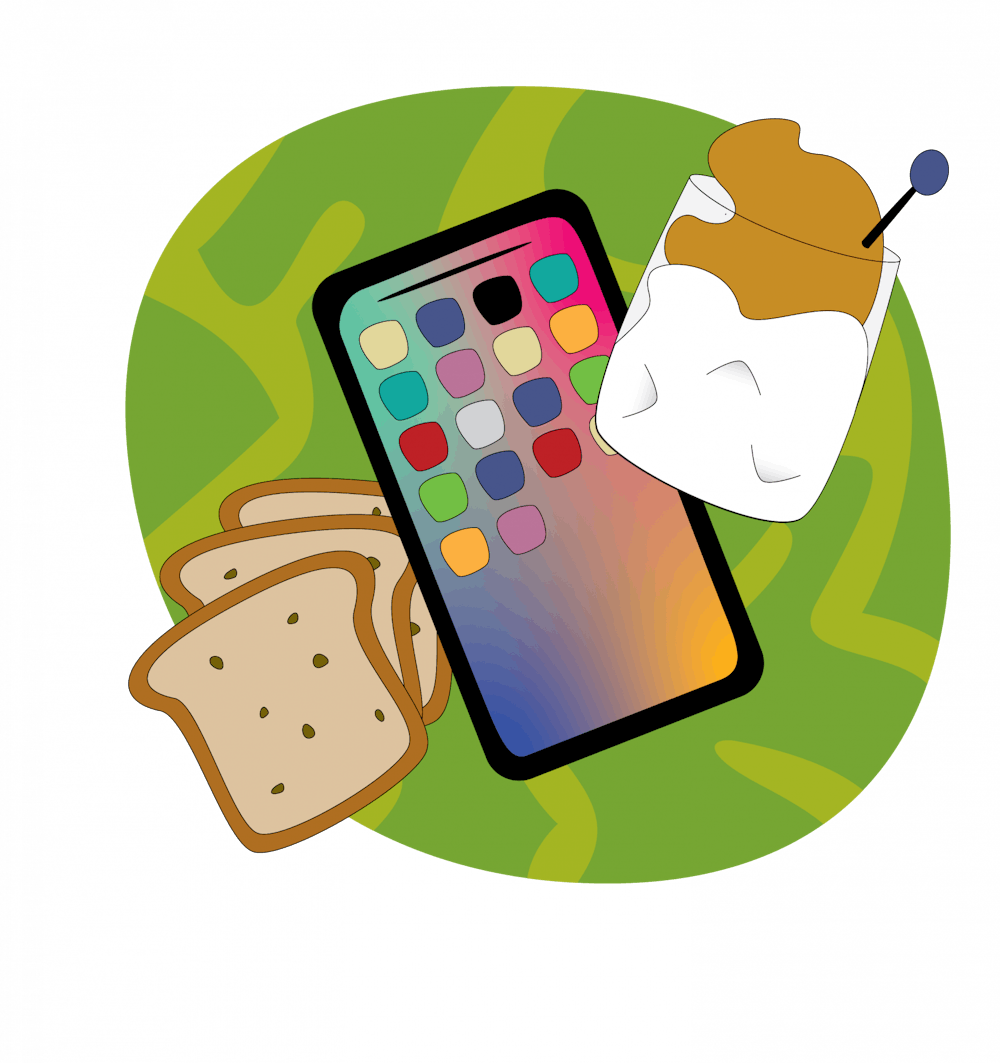The moment I entered 'foodtok,' I was hooked. This niche community on my TikTok For You page combined my three favorite things—social media, a nice aesthetic, and food—on my screen all at once. And that was a recipe for the biggest change in my mundane quarantine life.
Before the start of the COVID–19 pandemic, and the isolation that came with it, I was not an adventurous cook. I stayed in my comfort zone, making scrambled eggs and brownies with premade mix. Like anyone afraid of trying something new, I was scared that if I attempted to make something more adventurous, I would inevitably fail. The recipes in the pages of Julia Child cookbooks looked too intimidating, and long cooking YouTube videos weren’t really my cup of tea. So—like anyone else who refused to learn any new cooking skills—I stuck to making scrambled eggs.
The change in my cooking habits began with whipped coffee. This trend emerged on foodtok—one of the hyper–specific categories under the social media app that focuses on the creation and enjoyment of food and food alone—at the height of quarantine. Somehow, seeing everyone on social media making this all–too–appealing concoction of stirred coffee and sugar made me want to try it.
The process was easy enough. I had sugar, a whisk, and, after a quick trip to the grocery store, some instant coffee. Even if I didn’t love drinking my Dalgona coffee (that’s what it’s really called; TikTok didn’t invent everything, you know), the fun in making it without having to strain myself made me more eager to try out more food trends.
Then came Jeremy Scheck, a student at Cornell University who, like the rest of the world, hopped on the bandwagon of creating TikToks during quarantine. When he and his spicy rigatoni with vodka, a recipe that was already recognized from Gigi Hadid’s Instagram (and thus, was attributed to her), popped up on my For You page, I knew I had to try it. Jeremy’s cooking videos—often simple recipes that can fit into a college lifestyle—were both informative and made cooking look easy.
I was hooked on the pasta with vodka sauce for weeks. It was simple, requiring only a handful of ingredients and spices that I already had in my kitchen cabinets, and tasted heavenly considering how little time and work I had put into making it. From there, I couldn’t wait to try more. My mom started to find me in the kitchen all the time. With my Zoom class as background noise, I made quesadillas for lunch or pasta with homemade pesto for dinner.
But TikTok cooking was not always so easy. I had my fair share of disastrous experiences in the kitchen. In my attempts at the pancake cereal trend, I didn’t realize how hard it would be to make nail–sized pancakes without a squeeze bottle. Nor did I realize how difficult it was to make bread—even my stab at a beginner–level cloud bread didn’t even make it to the oven. The first time I took a stab at French macarons, the batter spread out instead of rising in the oven.
But my failed cooking endeavors never pushed me away from foodtok. There was always something new for me to make. I regularly found a new dish that made me want to get out of bed, run to the grocery store, and try making it myself. What also kept me on foodtok, especially on the days I didn’t feel like cooking, was the community that came up with the recipes. Joanne Molinaro, also known as the Korean Vegan, posts her vegan takes on traditional Korean dishes with beautiful cinematography. As I watch her cook, I learn not only how to make her dishes, but also about her life, which she eloquently narrates through touching stories and anecdotes.
Social media taught me how to cook during quarantine. It showed me, with the simplicity of short videos and beautiful visuals, how to leave my comfort zone and explore something new when everything else in my life came to a sudden halt. Though the life we had during the early parts of quarantine has been slowly phased out, I see myself holding on to the cooking skills I developed during these times now and into the rest of my life, and I look forward to trying out new food trends in the process.

